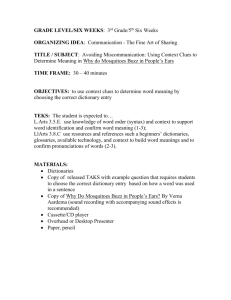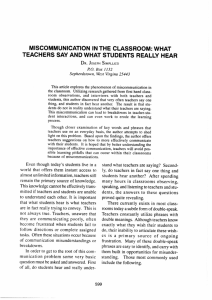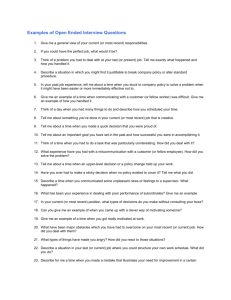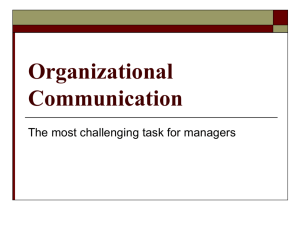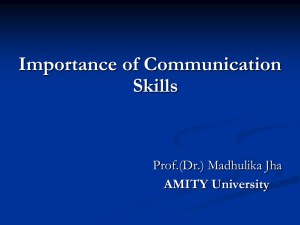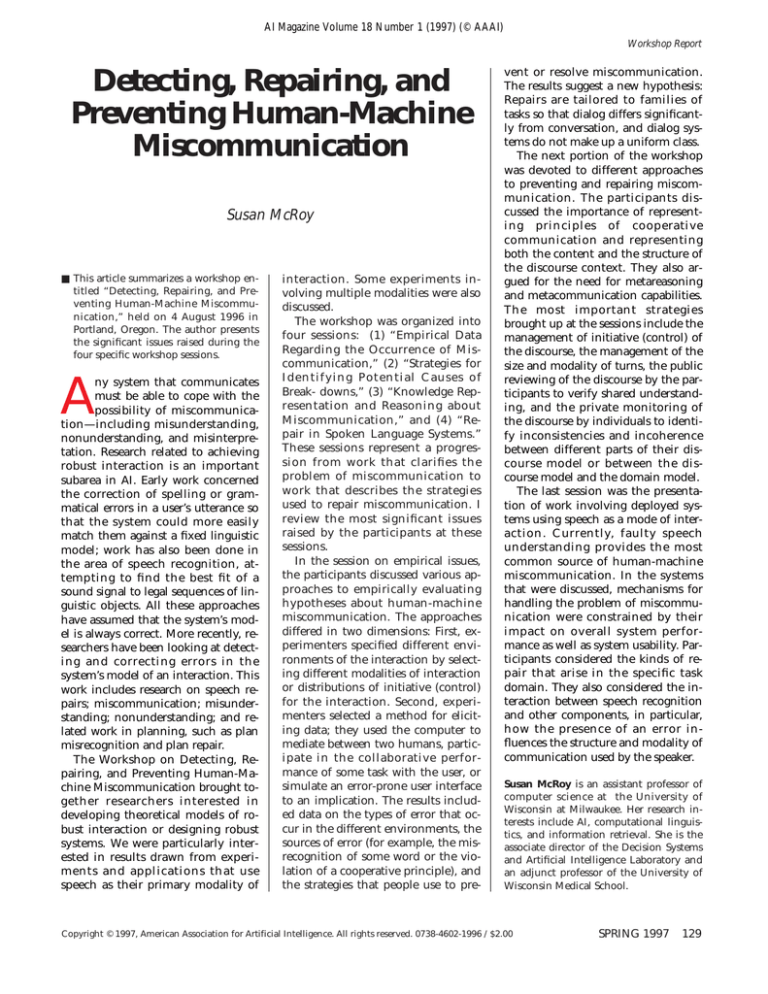
AI Magazine Volume 18 Number 1 (1997) (© AAAI)
Workshop Report
Detecting, Repairing, and
Preventing Human-Machine
Miscommunication
Susan McRoy
■ This article summarizes a workshop entitled “Detecting, Repairing, and Preventing Human-Machine Miscommunication,” held on 4 August 1996 in
Portland, Oregon. The author presents
the significant issues raised during the
four specific workshop sessions.
A
ny system that communicates
must be able to cope with the
possibility of miscommunication—including misunderstanding,
nonunderstanding, and misinterpretation. Research related to achieving
robust interaction is an important
subarea in AI. Early work concerned
the correction of spelling or grammatical errors in a user’s utterance so
that the system could more easily
match them against a fixed linguistic
model; work has also been done in
the area of speech recognition, attempting to find the best fit of a
sound signal to legal sequences of linguistic objects. All these approaches
have assumed that the system’s model is always correct. More recently, researchers have been looking at detecting and correcting errors in the
system’s model of an interaction. This
work includes research on speech repairs; miscommunication; misunderstanding; nonunderstanding; and related work in planning, such as plan
misrecognition and plan repair.
The Workshop on Detecting, Repairing, and Preventing Human-Machine Miscommunication brought together researchers interested in
developing theoretical models of robust interaction or designing robust
systems. We were particularly interested in results drawn from experiments and applications that use
speech as their primary modality of
interaction. Some experiments involving multiple modalities were also
discussed.
The workshop was organized into
four sessions: (1) “Empirical Data
Regarding the Occurrence of Miscommunication,” (2) “Strategies for
Identifying Potential Causes of
Break- downs,” (3) “Knowledge Representation and Reasoning about
Miscommunication,” and (4) “Repair in Spoken Language Systems.”
These sessions represent a progression from work that clarifies the
problem of miscommunication to
work that describes the strategies
used to repair miscommunication. I
review the most significant issues
raised by the participants at these
sessions.
In the session on empirical issues,
the participants discussed various approaches to empirically evaluating
hypotheses about human-machine
miscommunication. The approaches
differed in two dimensions: First, experimenters specified different environments of the interaction by selecting different modalities of interaction
or distributions of initiative (control)
for the interaction. Second, experimenters selected a method for eliciting data; they used the computer to
mediate between two humans, participate in the collaborative performance of some task with the user, or
simulate an error-prone user interface
to an implication. The results included data on the types of error that occur in the different environments, the
sources of error (for example, the misrecognition of some word or the violation of a cooperative principle), and
the strategies that people use to pre-
vent or resolve miscommunication.
The results suggest a new hypothesis:
Repairs are tailored to families of
tasks so that dialog differs significantly from conversation, and dialog systems do not make up a uniform class.
The next portion of the workshop
was devoted to different approaches
to preventing and repairing miscommunication. The participants discussed the importance of representing principles of cooperative
communication and representing
both the content and the structure of
the discourse context. They also argued for the need for metareasoning
and metacommunication capabilities.
The most important strategies
brought up at the sessions include the
management of initiative (control) of
the discourse, the management of the
size and modality of turns, the public
reviewing of the discourse by the participants to verify shared understanding, and the private monitoring of
the discourse by individuals to identify inconsistencies and incoherence
between different parts of their discourse model or between the discourse model and the domain model.
The last session was the presentation of work involving deployed systems using speech as a mode of interaction. Currently, faulty speech
understanding provides the most
common source of human-machine
miscommunication. In the systems
that were discussed, mechanisms for
handling the problem of miscommunication were constrained by their
impact on overall system performance as well as system usability. Participants considered the kinds of repair that arise in the specific task
domain. They also considered the interaction between speech recognition
and other components, in particular,
how the presence of an error influences the structure and modality of
communication used by the speaker.
Susan McRoy is an assistant professor of
computer science at the University of
Wisconsin at Milwaukee. Her research interests include AI, computational linguistics, and information retrieval. She is the
associate director of the Decision Systems
and Artificial Intelligence Laboratory and
an adjunct professor of the University of
Wisconsin Medical School.
Copyright © 1997, American Association for Artificial Intelligence. All rights reserved. 0738-4602-1996 / $2.00
SPRING 1997
129

